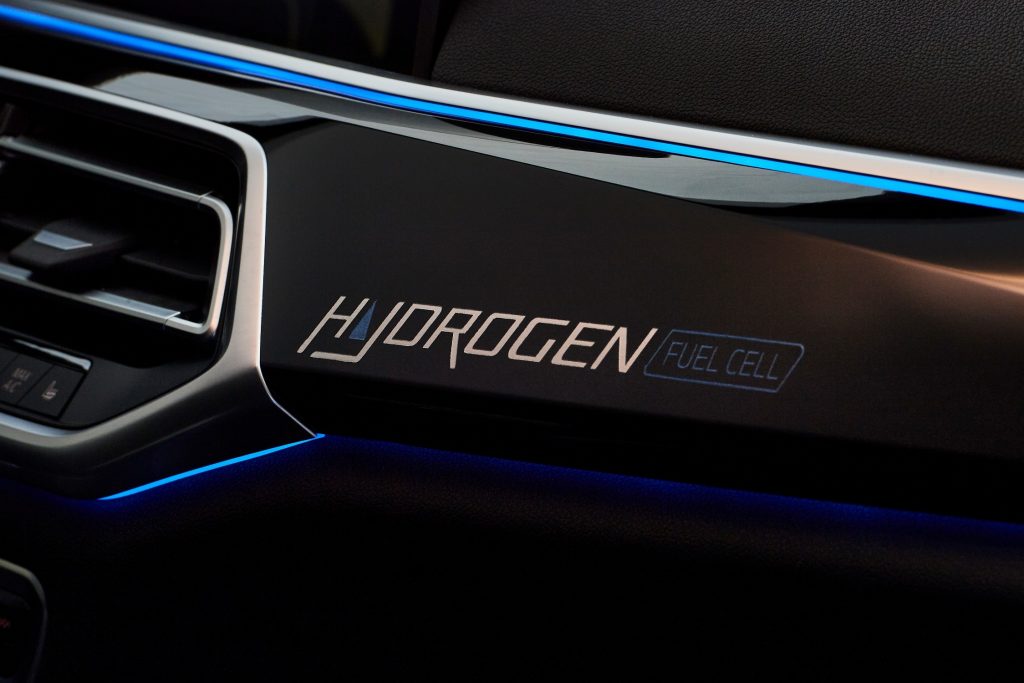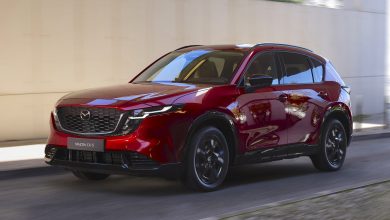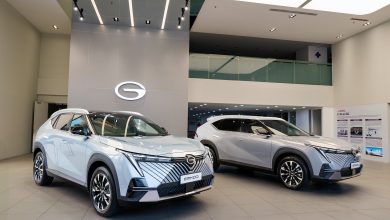BMW’s iX5 Hydrogen FCEV To Debut At Munich Auto Show
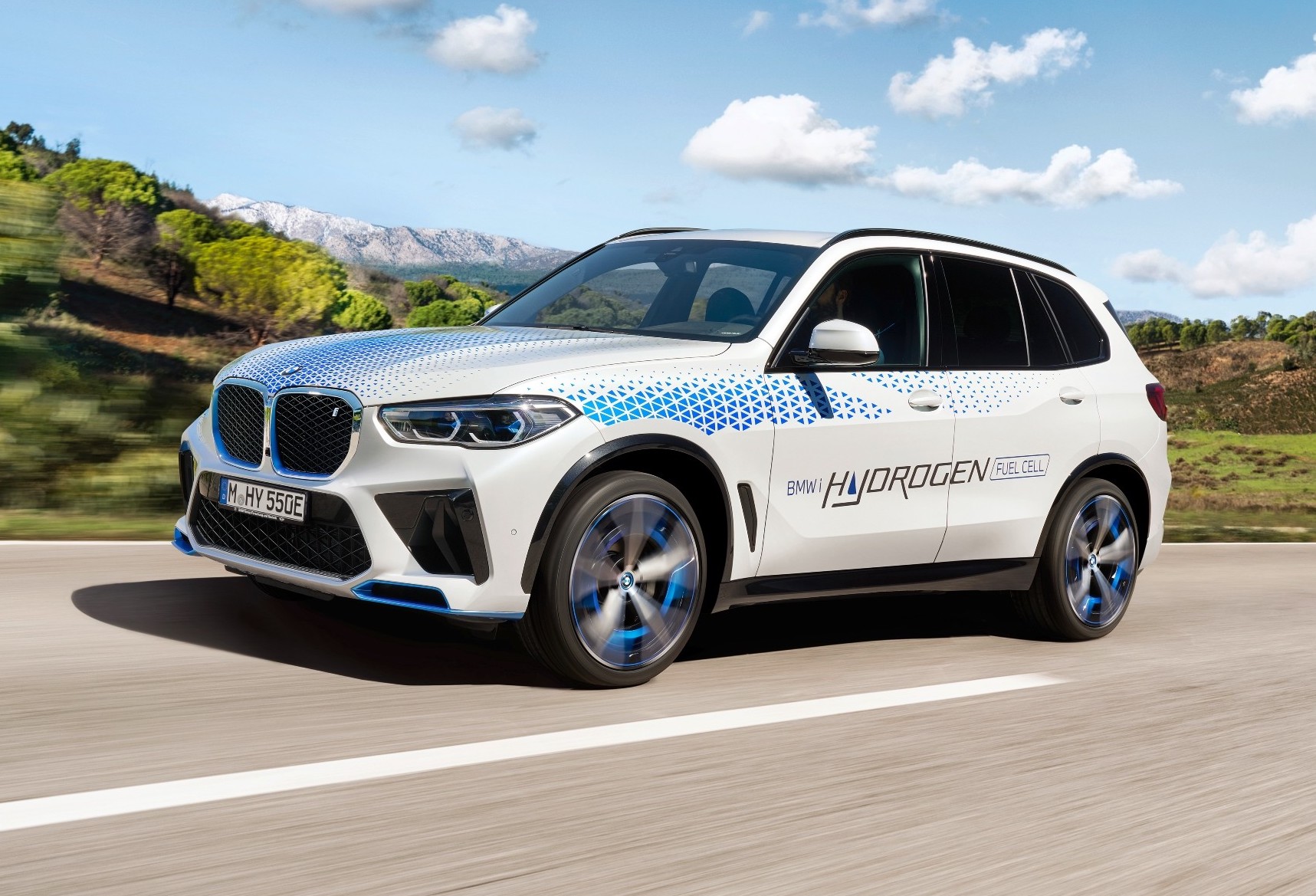
It will still be a long time coming though before the iX5 Hydrogen makes it into series production.
While the 2021 Munich Motor Show isn’t for another couple of weeks, the various German automakers have already been blowing their load off with a flurry of new reveals. And the most intriguing of which to come out in the recent days is BMW’s new iX5 Hydrogen.
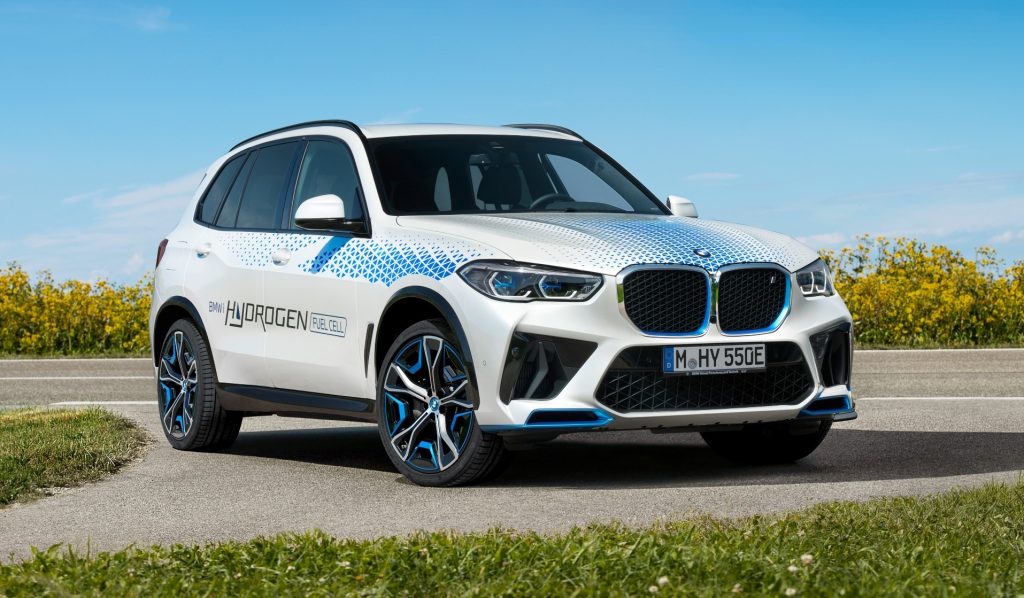
Based on its X5, this H2 FCEV has actually been in the works at BMW for quite a while now under the guise of the i Hydrogen NEXT concept. In fact, much of the fanfare this time round is actually related to this eco-friendly SUV being used to shuttle visitors of the IAA Mobility 2021 event from the main exhibition grounds with other exhibition venues in the city centre.

Rather interestingly though for something that has been around in one form or another since 2019, not much is actually known about the tech specs of this newly-renamed iX5 Hydrogen. BMW for instance has only said that under the hood lies a fifth-generation drive motor similar to the one found in its iX, which in turn generally produces 168 hp but can make up to 369 hp (275 kW) when pushed.
The Bavarian automaker has however been slightly more clear on the range yielded from its twin 700-bar hydrogen tanks constructed of carbon-fibre reinforced plastic (CFRP). Claiming that its 6 kg of H2 stored between them will apparently enable the iX5 Hydrogen to travel an estimated 480 km, between each three to four-minute fuel up.

BMW has also gone into rather great detail in regards to the exterior enhancements that have made to the iX5 Hydrogen over its fuel-burning derivatives. These visual changes include a 3D-printed mesh insert within the ever-large kidney grille up front and unique rear apron round its rump, as well as massive 22-inch aerodynamic wheels that are wrapped in sustainably produced Pirelli tyres made of natural rubber and rayon.


Bits of blue also make an appearance on the various trim pieces both outside and within the iX5 Hydrogen, with a smattering of ‘Hydrogen Fuel Cell’ badges on the door entry sills and instrument panel cover trim further driving home the alternative fuel source powering this BMW SUV.
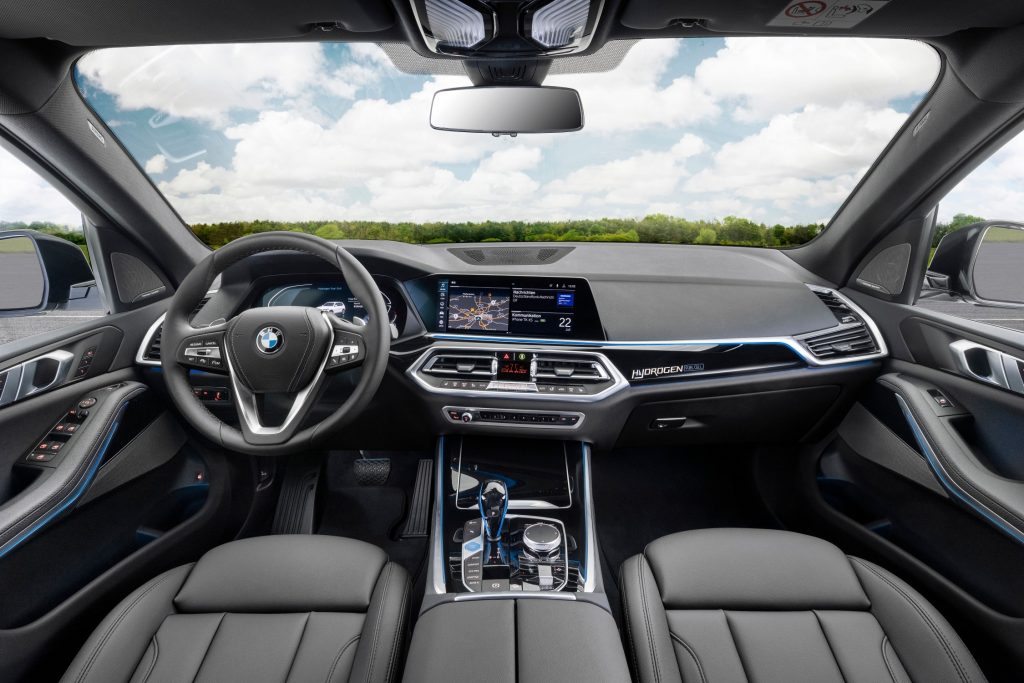
According to BMW, the iX5 Hydrogen will unfortunately not be making its way into series production anytime soon. Instead, a small run of these H2 FCEV SUVs will enter service for demonstration and testing purposes from the end of next year.
Then again, BMW has yet to properly rule out a production hydrogen FCEV for the future. The company has after all made clear that it thinks hydrogen fuel cells can co-exist with battery electric vehicles in the future, particularly in places with no easy access to recharge a BEV.
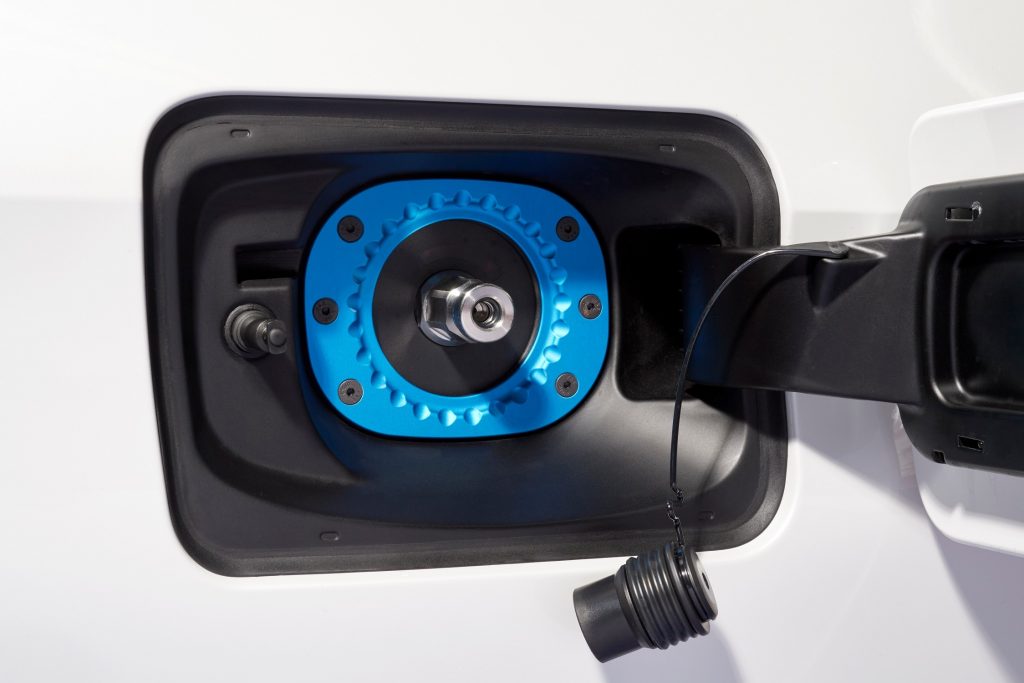
Having said that however, BMW does acknowledge the uncomfortable fact that there to be a robust refuelling infrastructure before hydrogen FCEVs can reach their full potential. Its home market though may soon be well on the way to that green goal, with Germany having previously pledged to invest heavily in becoming a European leader in hydrogen come 2030.
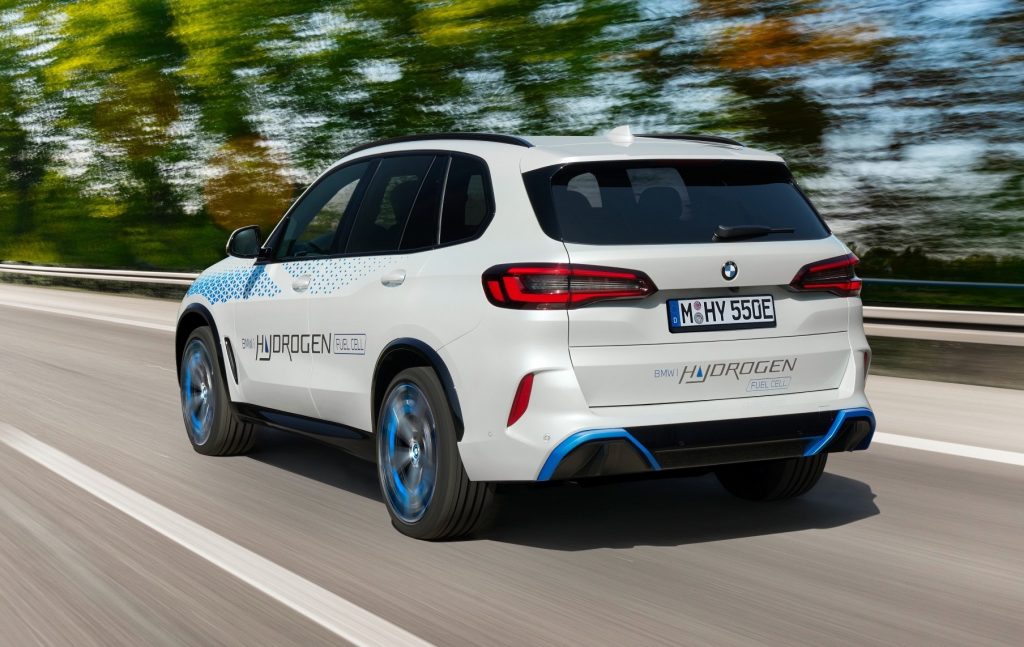
PRESS RELEASE: The BMW Group is systematically pushing forward with development of hydrogen fuel cell technology as an additional option for sustainable individual mobility. Two years after unveiling the BMW i Hydrogen NEXT concept car, the company will present the BMW iX5 Hydrogen at the IAA Mobility 2021 in Munich. Currently still in series development, the Sports Activity Vehicle (SAV) with hydrogen fuel cell drive train will be one of several vehicles visitors can experience as they are driven along the Blue Lane connecting the main exhibition grounds with other exhibition venues in the city centre.
A small series of the BMW iX5 Hydrogen, developed on the basis of the BMW X5, will be used for demonstration and testing purposes from the end of next year. Its hydrogen fuel cell system is further proof of the BMW Group’s leading development expertise in the field of electric drive technologies. “With its high-performance fuel cell and optimised power battery, the BMW iX5 Hydrogen’s drive system is unique in the world,” said Juergen Guldner, head of BMW Group Hydrogen Fuel Cell Technology and Vehicle Projects. “With this, we are forging new paths for sustainable driving pleasure.”
With the right conditions, hydrogen fuel cell technology has the potential to become a further pillar in the BMW Group’s drive train portfolio for local CO2-free mobility. The BMW i brand, which is entirely geared towards locally emission-free mobility, could in the future also offer vehicles with hydrogen fuel cell drive trains, in addition to battery-electric models such as the BMW i3, BMW iX3, BMW iX and BMW i4. Provided the hydrogen is produced using renewable energy and the necessary infrastructure is available, this technology can complement the BMW Group’s electrified drive train portfolio – and, in particular, meet the needs of customers who do not have their own access to electric charging infrastructure, frequently drive long distances or desire a high degree of flexibility.
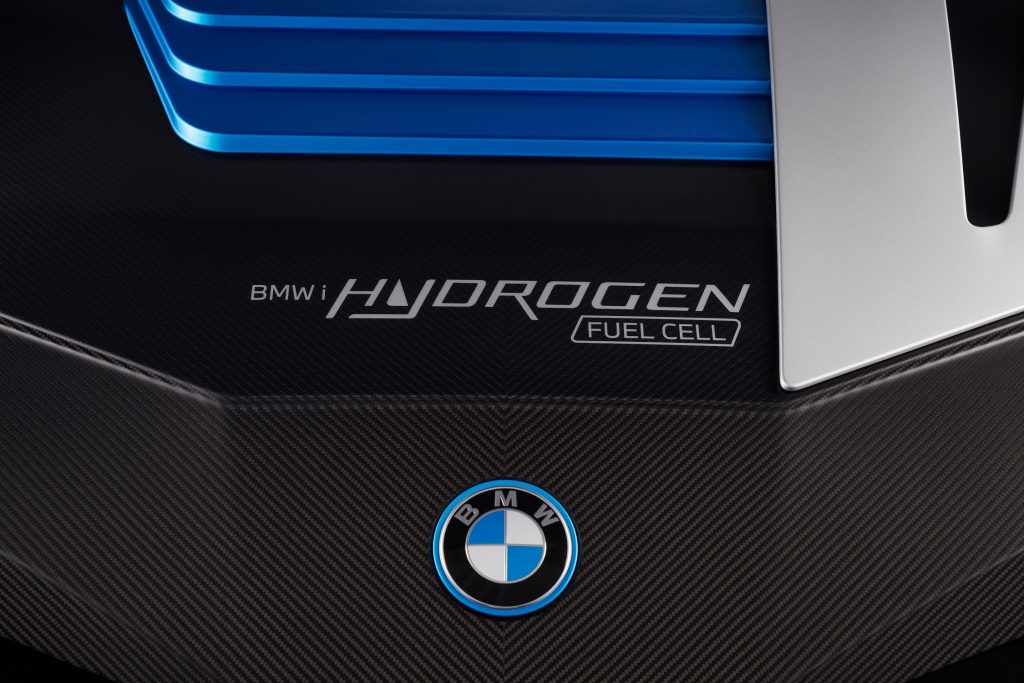
Model-specific design elements 3D-printed for locally emission-free Sports Activity Vehicle.
The BMW iX5 Hydrogen is a modern luxury Sports Activity Vehicle (SAV) that combines ground-breaking drive technology with the powerful proportions, convenience and versatility of a BMW X model. Individual exterior and interior design elements highlight the car’s ties to the BMW i brand, as well as its specific drive technology. The inner edging of the BMW kidney grille, the inserts in the 22- inch aerodynamic wheels and the attachments in the outer portion of the rear apron are all in BMW i Blue. The entry sills and cover trim for the instrument panel also sport a “hydrogen fuel cell” badge.
The mesh inserts covering the cooling air openings at the front of the BMW iX5 Hydrogen, as well as the rear apron and its diffuser element, also have their own unique design. The ornamental grilles covering the BMW kidney grille, the lower and two outer air inlets and the body elements for the lower rear end trim all come from the BMW Group’s Additive Manufacturing Campus, which uses 3D printing to produce prototype and standard parts. Additive manufacturing enables fast and highly flexible production of components – some of which have geometric shapes that cannot be realised with conventional production methods.
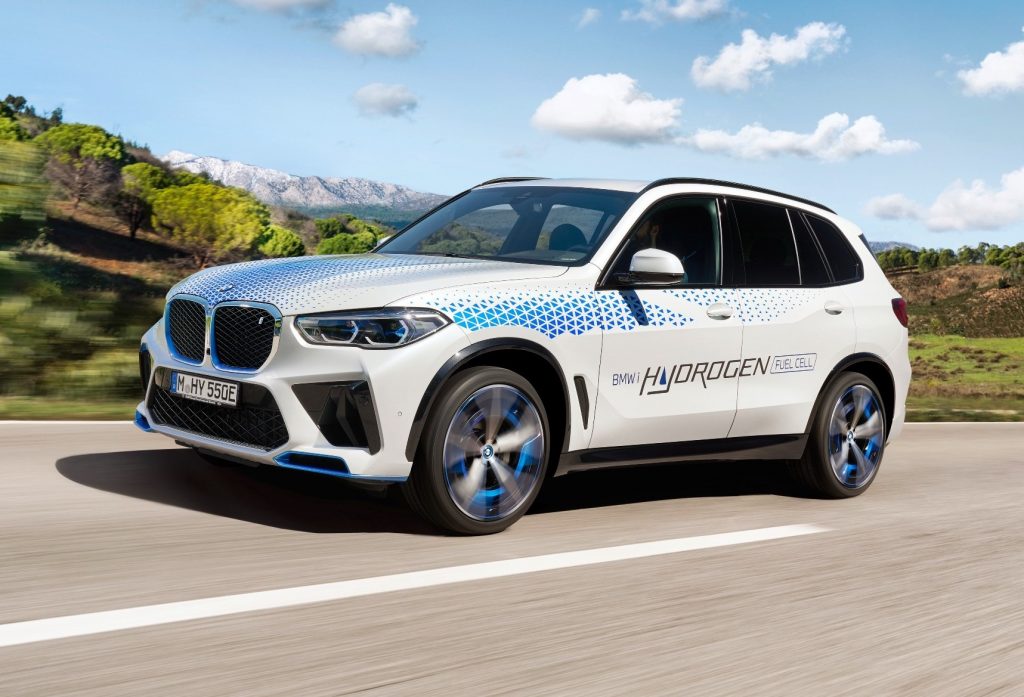
Systematic sustainability: Aerodynamic wheels and tyres made of natural rubber.
The BMW iX5 Hydrogen’s aerodynamic wheels come with sustainably produced tyres made of natural rubber and rayon. The raw materials for this are extracted in compliance with the standards of the independent Forest Stewardship Council (FSC) organisation. The BMW Group is the first automotive manufacturer worldwide to use Pirelli tyres made exclusively from certified natural rubber and the wood-based material rayon in its production vehicles.
Hallmark BMW driving dynamics, strong long-distance capabilities.
The BMW iX5 Hydrogen combines fuel cell technology with a fifth-generation BMW eDrive. The drive system uses hydrogen as fuel by converting it into electricity in a fuel cell – delivering an electrical output of up to 125 kW/170 hp, with water vapour as the only emission. This drive power also enables it to maintain consistently high speeds over longer distances. The electric motor was developed from the fifth-generation BMW eDrive technology also used in the BMW iX. In coasting overrun and braking phases, it serves as a generator, feeding energy into a power battery. The energy stored in this power battery is also utilised for particularly sporty driving manoeuvres – delivering a system output of 275 kW/374 hp and guaranteeing the brand’s signature driving experience.
The hydrogen needed to supply the fuel cell is stored in two 700-bar tanks made of carbon-fibre reinforced plastic (CFRP), which together hold almost six kilograms of hydrogen. “Filling up the hydrogen tanks only takes three to four minutes – so there are no limits on using the BMW iX5 Hydrogen for long distances, with just a few, short stops in-between,” explains Guldner.
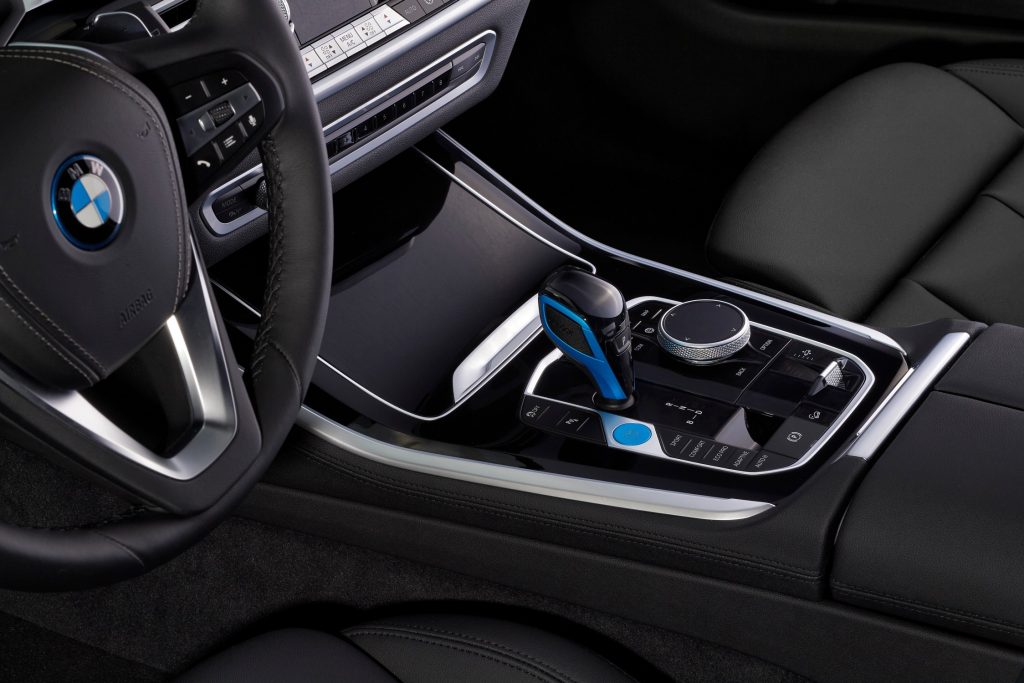
Hydrogen as part of global activities for CO2-free mobility.
According to a report by the International Energy Agency (IEA), hydrogen offers considerable potential as a future energy source in connection with global energy transition activities. Thanks to its storage and transport capabilities, hydrogen can be used for a wide variety of applications. Most industrialised countries are therefore adopting hydrogen strategies and backing them up with roadmaps and concrete projects. In the transport sector, hydrogen can become a further technology option, alongside battery-electric mobility, for shaping sustainable individual mobility in the long term. However, this will depend on competitive production of sufficient quantities of hydrogen from green power, as well as expansion of the corresponding filling infrastructure, which is already being intensively pursued in many countries.
The BMW Group welcomes and supports activities to promote innovation in Germany and Europe that will help build a hydrogen economy and accelerate production of green hydrogen. These specifically include the large-scale hydrogen projects classified as Important Projects of Common European Interest (IPCEI). The projects that comprise this European Union initiative, supported in Germany by the Federal Ministry of Economic Affairs and the Federal Ministry of Transport, span the entire value chain – from hydrogen production to transport to applications in industry.
